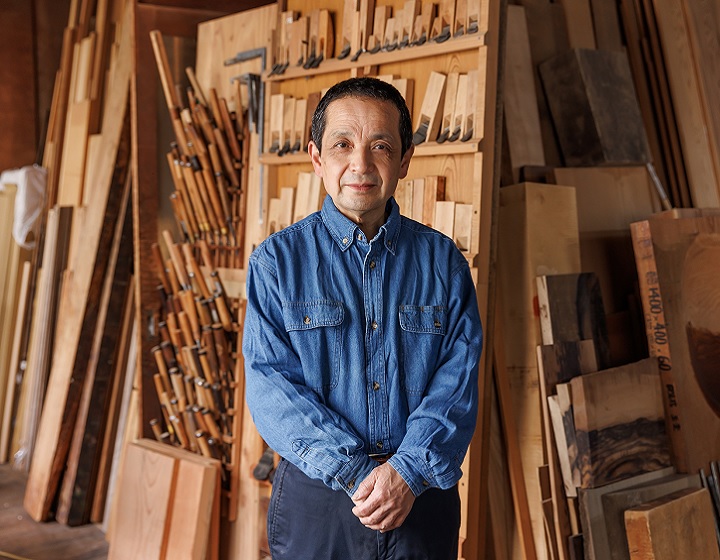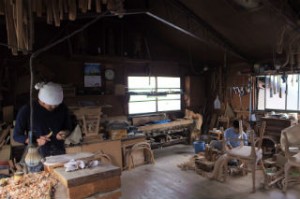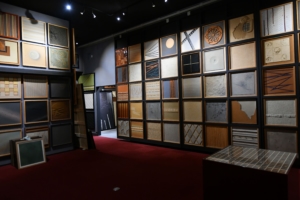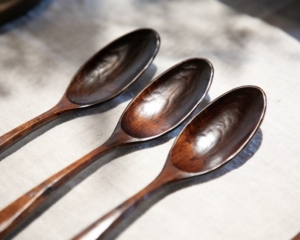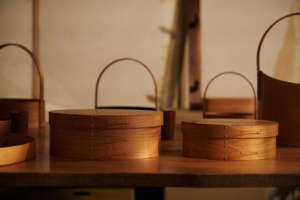Among the traditional techniques of woodworking, the oldest is kurimono, a technique of carving out a block of wood with a chisel and a planer. Since his first entry in 1992, when he won his first prize at the Japan Traditional Crafts Exhibition, the largest of its kind in Japan, he has frequently won awards at other prestigious crafts exhibitions. In 2022, Kawaguchi received the Pola Award for Excellence in Traditional Culture, which is said to have an influence on the selection of living national treasures. We visited his studio in Kariya City, Aichi Prefecture.
Majored in crafts at university and entered the world of fittings
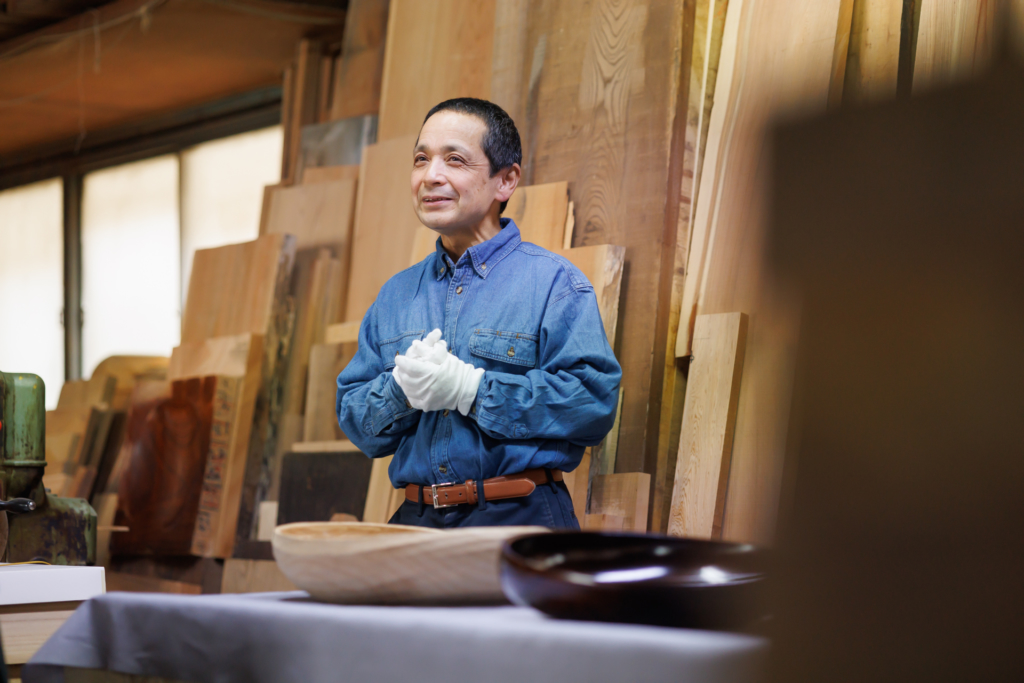
It was during his college years that Mr. Kawaguchi entered the world of woodworking. He entered the art department of Aichi University of Education, where he majored in crafts in his third year, and as he worked with a variety of materials, he became interested in woodworking. His teacher at the time recognized his interest and took him on several visits to a fixture store in Kariya City, where the university was located, and he became interested in the fixture business and began working there part-time. His hard work was well-received, and he was hired at the same fixture store where he had been working.
While working as a joiner, he independently researched gouges.
Fittings are doors, shoji screens, fusuma (sliding doors), and other items used to partition rooms and the outside. After finding a job and working hard at making fittings, Mr. Kawaguchi began to make kurimono in his spare time. Why did he choose to make kurimono? He has no clear reason. I guess I just happened to have the right materials on hand,” he says, reminiscing about those days.
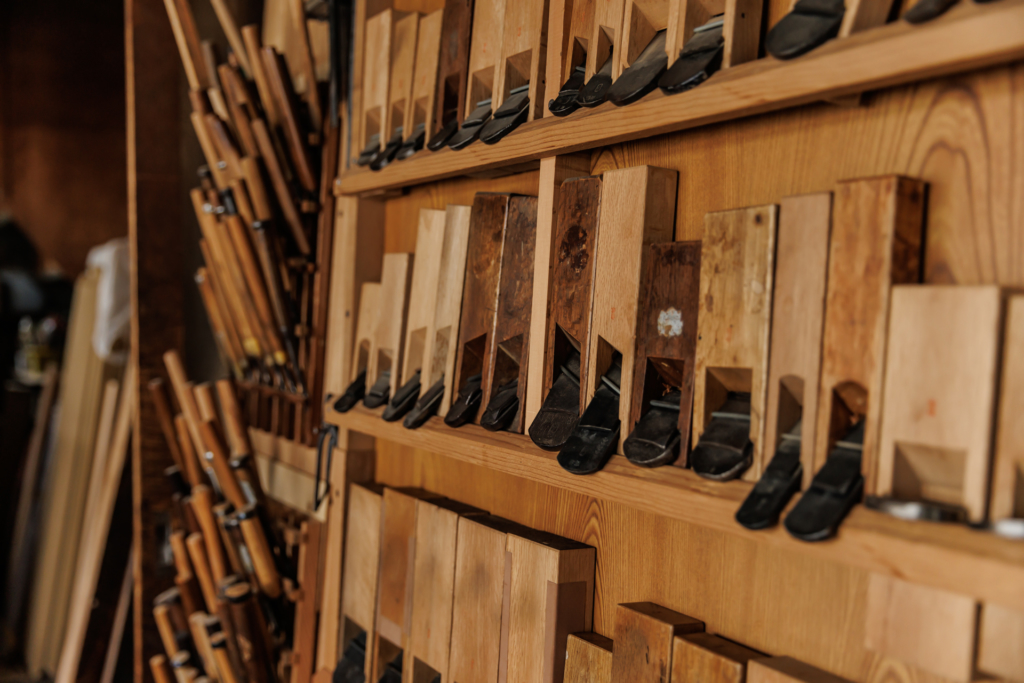
The first piece he made out of boride was a tanzaku box, a rectangular box for writing tanzaku, a type of Japanese poetry.
When I tried it, it was so interesting,” said Kawaguchi with a smile on his face. She was immediately captivated by the idea of making gorimono. The way she talked about the charm of this craft was like a parent caring for a child.
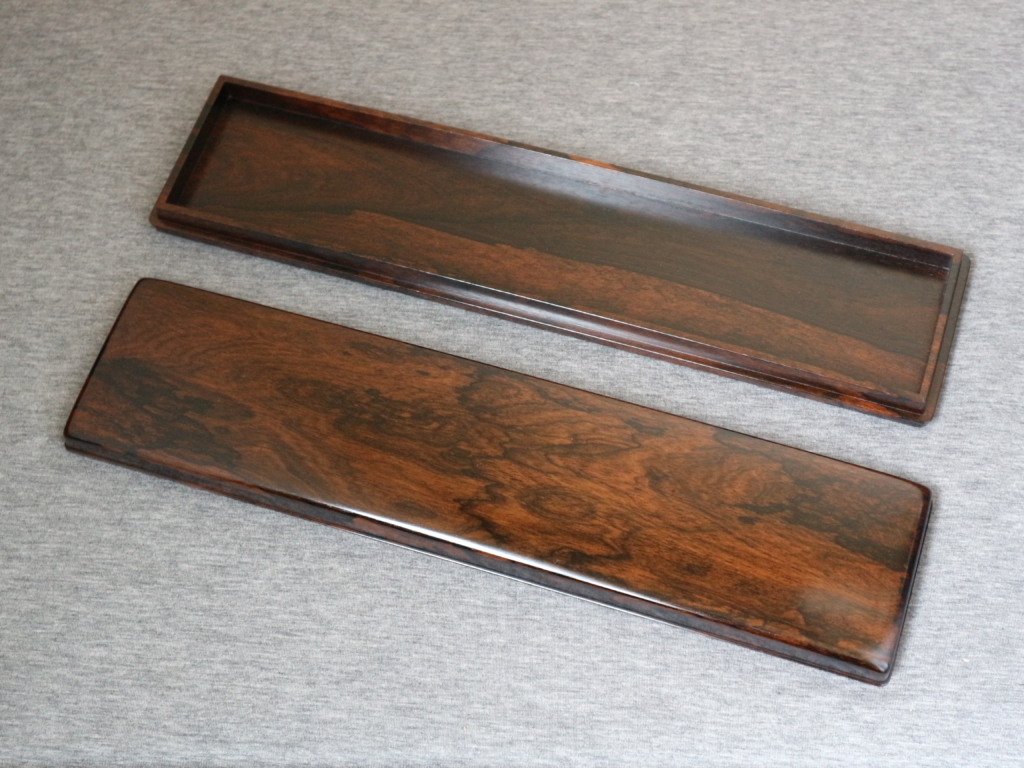
Because the tools and methods of production differ from those used for fittings, he learned from people who were familiar with this genre, asked specialists who handle tools such as a planer, and visited lacquer craftsmen. Mr. Kawaguchi’s interest in the art of kurimono has never ceased.
In 1992, he was awarded the Medal with Purple Ribbon, and in 2022, he was awarded the Pola Award for Excellence, the highest recognition for traditional culture, which also influences the selection of living national treasures. In 2022, he was awarded the Pola Prize for Excellence, the highest evaluation of the Pola Prize for Traditional Culture, which is said to have an influence on the selection of living national treasures. The reason for this award is that the craftsman was recognized for his innovative sculptural skills and precise techniques that accentuate the beauty of the wood grain, even though they are practical crafts.
It can be sparked by looking at a tree or by a shape.
In woodworking, the way the grain of the wood is utilized is the appeal of the work, and it is also a showcase of the craftsman’s skill. In woodworking, the way the grain of the wood is brought to life is what makes the piece appealing and is a showcase for the craftsman’s skill. Kawaguchi says, “I whittle away at the grain of the wood as if I were painting a picture on the shape of the vessel. Kawaguchi captures the grain of the wood as if he is creating his own scenery. In his eyes, the grain of the wood may appear as if it were alive.
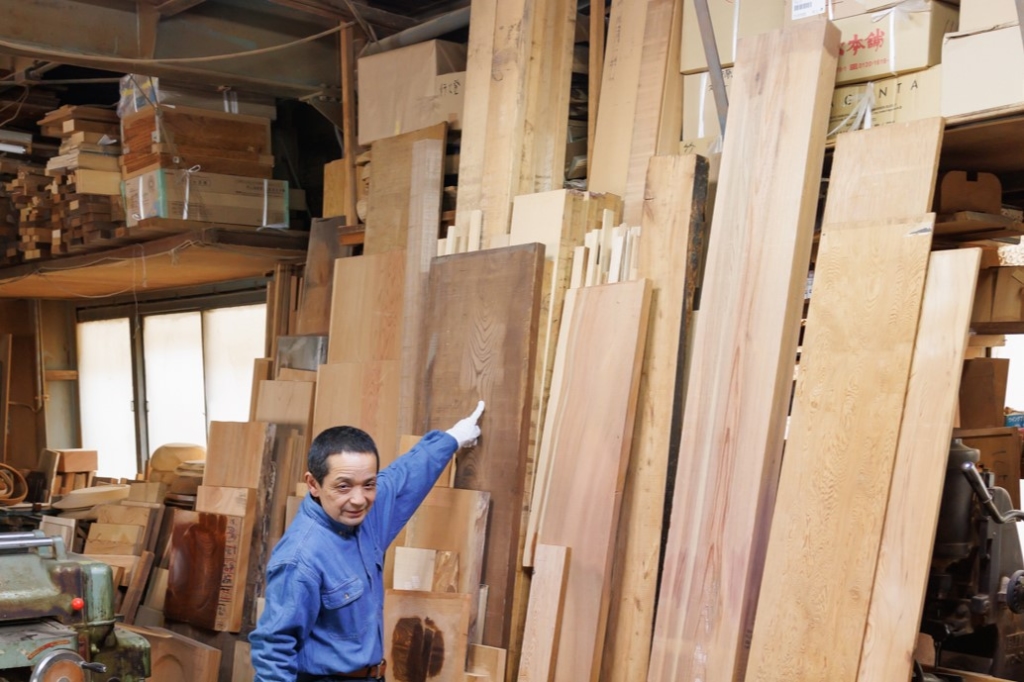
The workshop is crammed with wood, but each tree has a different grain texture, even if they are of the same species. The annual rings are formed in different ways depending on the speed of growth of the tree, and sometimes there are wrinkles depending on the environment in which the tree was growing. The wood used for production takes time to dry. In order to be able to immediately give form to an idea that strikes him at that moment, he dries various types of wood in his workshop and has them ready for use at any time.
Precious Jindaike zelkova and Miyama cedar
Among them is “Jindai Zelkova,” a rare wood that has been buried in the ground for more than 1,000 years and is used by artists for special occasions such as exhibiting their works at the Japan Crafts Exhibition. Kawaguchi-san’s workshop also has a piece of this wood. The color and texture of the wood are favored by craftspeople for their austerity. Originally, this wood was not available on the market, but in 1959, the Ise Bay typhoon, which caused the most damage since the Meiji era, felled many trees at Ise Jingu Shrine, and they were preserved and made available for purchase by the general public. Being a large tree, the annual rings are fine and exude delicacy.
Kurogaki (black persimmon) with a modern atmosphere
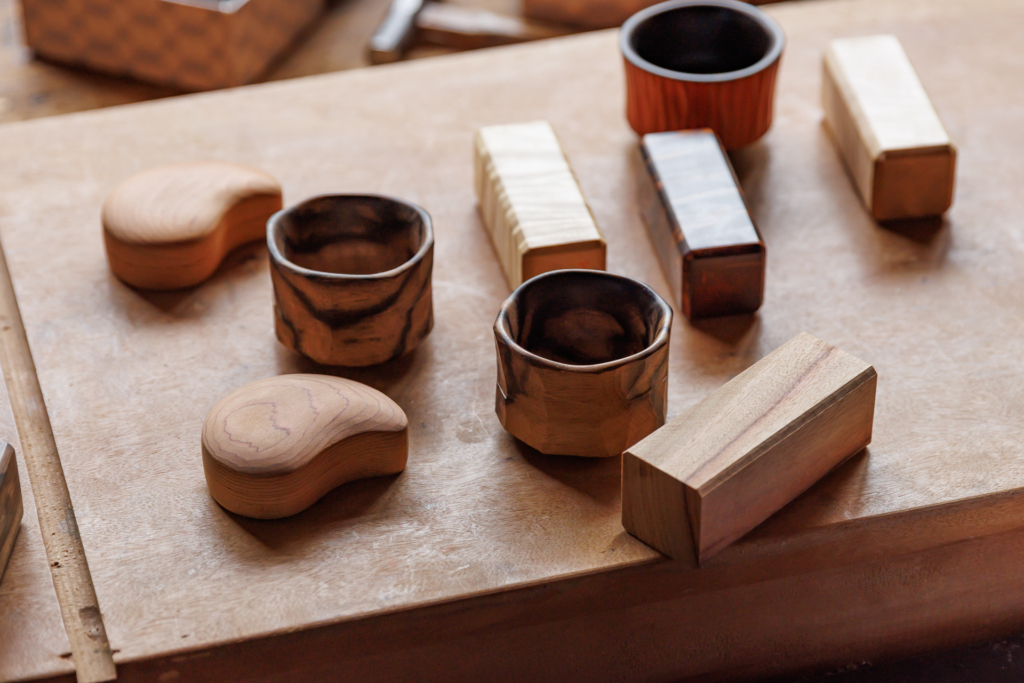
Along with such rare woods, black persimmon catches the eye with its unusual coloring. This is another mysterious material,” says Kawaguchi. Kawaguchi-san says, “It’s also a mysterious material. The black pattern is created not by the grain of the wood, but by the reaction of the wood with the elements absorbed from the soil. The appeal of this material is that it gives the impression of modern art nuance, even though it is simply a natural product.
Tradition of not stopping and evolving
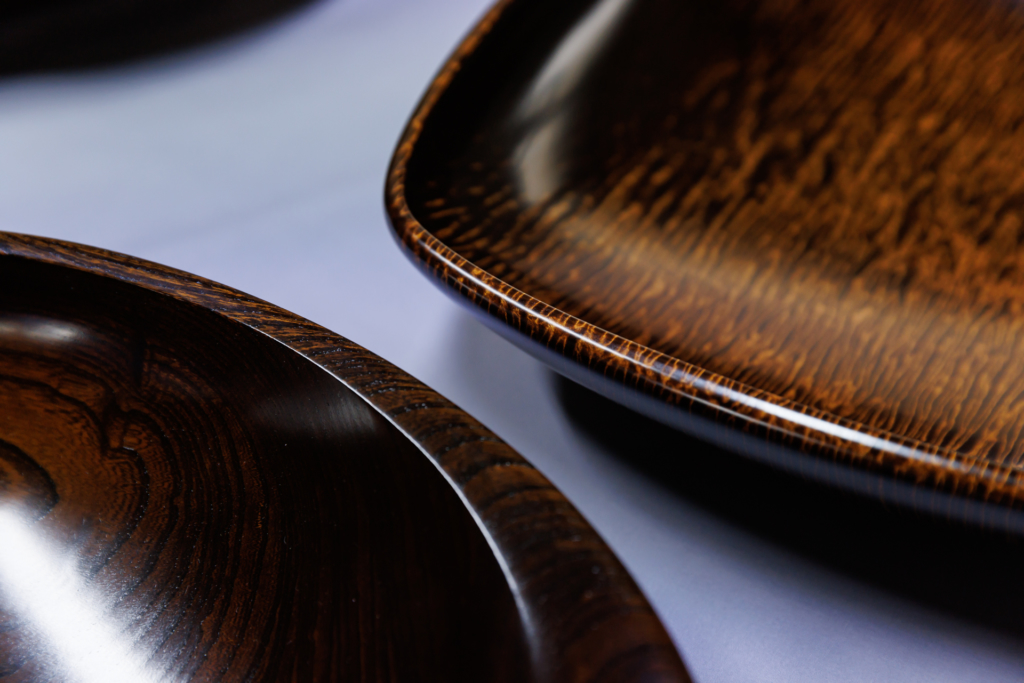
It takes several years for the wood to dry and become usable, or more than 10 years for the longest ones. The process is repeated several times, and the wood changes its shape when it is moistened and when it is dry. It takes a long time to produce a single work of art.
Materials are expensive, and production is time-consuming. And it is not as if what is made sells like hotcakes. Thus, woodworking is not a world that offers great returns. Nevertheless, what drives Mr. Kawaguchi is his love of wood, which is pleasant to the touch. He has never wavered in his determination to work with wood throughout his life since he started woodworking.
He is also motivated by the recognition of his work at the Japan Traditional Crafts Exhibition and other exhibitions. Kawaguchi’s works have a lively and dynamic feel, as if the grain of the wood has been painted with paint.
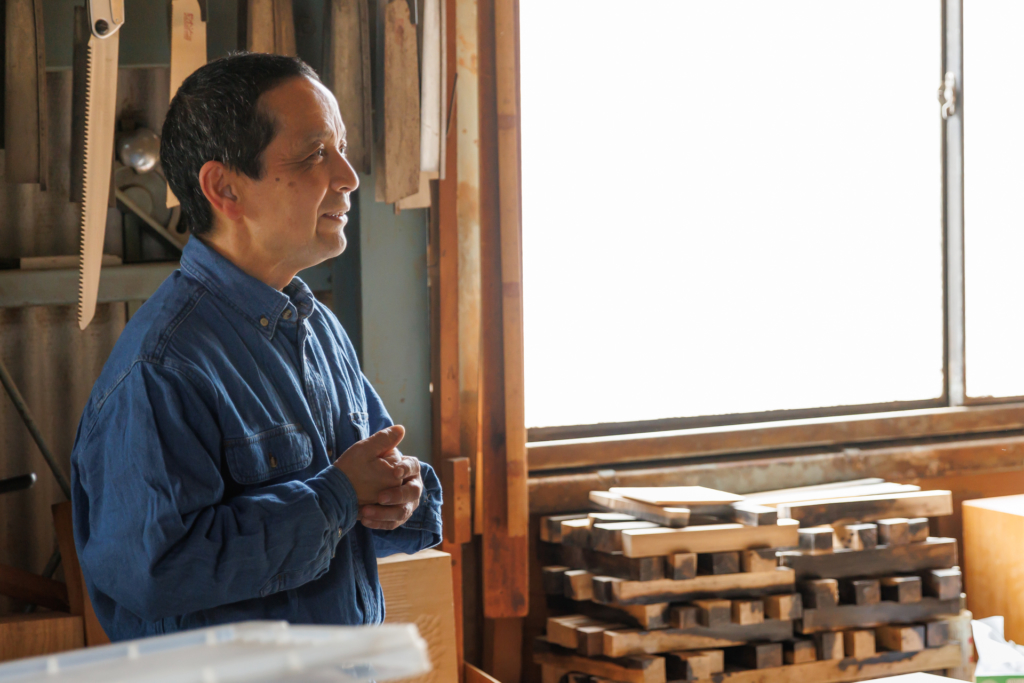
Mr. Kawaguchi likes to spend time working, but he also enjoys the time he spends thinking of new ideas. He gets his ideas from looking at wood, or from taking a walk in nature to get inspiration from natural scenery and flowers.
Although it is a different genre from woodworking, he also gets a lot of inspiration from art exhibitions of contemporary art. Even the world’s most famous artists change with the times, and what they think and create also changes.
I think that’s what tradition is all about. He speaks quietly, but with an eye on the future, he is passionate about what he is doing.



